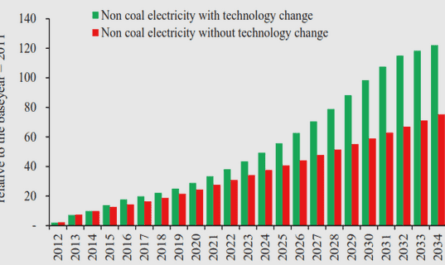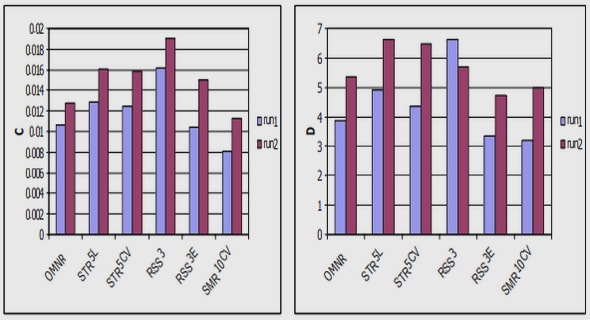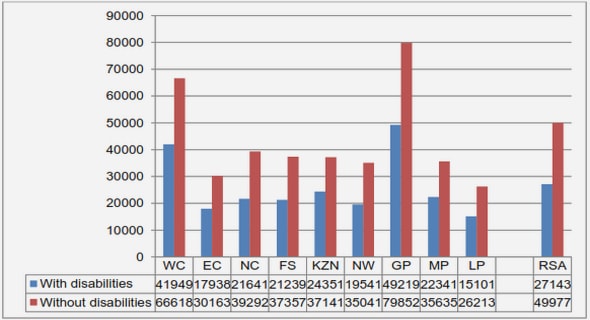Get Complete Project Material File(s) Now! »
Multiple Xcc T3Es redundantly activated plant immune responses
Six XccT3Es enhance PTI responses
During this work, we decided to evaluate the effects of Xcc T3Es on the activities of MAPK3 and MAPK6 due to their key signal transduction functions in PTI responses (Meng & Zhang, 2013). Six Xcc effectors enhanced the activation of such MAPK in response to flg22 but strikingly none of the Xcc T3Es activated MAPK by their own. Recent reports based mainly on the immunogenic activities of T3Es of P. syringae, proposing that ETI pathways participate predominantly as enhancers of PTI by promoting the expression of PTI-related genes, being the PTI components the main activators of plant immune responses (Ngou et al., 2021; Yuan et al., 2021). Our results are the first report of this phenomenon on T3Es of Xcc suggesting that the role of ETI as a PTI enhancer could be rather a general phenomenon in the plant response to T3Es and not specific to T3Es of certain species. Importantly, flg22 is just one of the multiple MAMPs and DAMPs that activate plant PTI pathways and different PTI-elicitors could induce specific defense profiles (Martin et al., 2020). Additionally, Xcc strains usually do not present a form of the peptide flg22 recognized by FLS2. The fact that XccΔhrcV is unable to infect Arabidopsis plants (Cerutti et al., 2017) suggests the existence of MAMP/DAMP of Xcc that elicit plant basal defense. Plant immune pathways activated by the Xcc MAMP/DAMP might differ from those activated by flg22. Studying the effect of Xcc T3Es on the immune pathways activated by such MAMP/DAMP could reveal other unknown activities or pathways of great interest.
Five Xcc T3Es promote the expression of immune-related genes.
Our transcriptomic approaches revealed that five Xcc T3Es including XopAC promoted the expression of similar immune-related genes. XopAC has been extensively recognized as an ETI-triggering effector (avirulence protein). This suggests that the other four T3Es could also have avirulence activities. This cluster of immune-related genes will be interesting for future studies, as they could provide us with clues about the interplay between the ETI and PTI responses. For instance, CRK36 has been found to be associated in vivo with FLS2 and BIK1, enhancing the flg22-triggered phosphorylation of BIK1 (D. S. Lee et al., 2017). CRK13 overexpression leads to hypersensitive response-associated cell death, and induces defense against P. syringae by causing increased accumulation of salicylic acid which is characteristic of PTI activation (Acharya et al., 2007). Future studies are needed to test whether the overexpression of these genes enhances the flg22-triggered activities of the MAPK. Interestingly, the five immunogenic T3Es also induced the overexpression of MKK1 and MPK11. Furthermore, MEKK1 was overexpressed in response to XopAC, XopAH and AvrXccA1, suggesting that the signaling cascade formed by MEKK1, MKK1 and MPK11 play a relevant role in ETI. Strikingly, the transcript levels of MAPK3, MAPK6, MKK4 and MKK5 genes, which form a parallel signaling cascade, were not affected by any of the five immunogenic effectors. It is known that the signaling cascade formed by MAPK3/MAPK6 and MKK4/MKK5 is very important for PTI pathways (Meng & Zhang, 2013). Our results suggest that the signaling cascade formed by MEKK1, MKK1 and MPK11 is promoted by the ETI. However, whether and how these signaling cascades are related, as well as if this is relevant for plant disease resistance, is still unknown but rise exiting questions for further studies.
Multiple avirulence T3Es in the virulent pathogen Xcc suggest that the collective properties of the T3 effectome are epistatic on individual T3E functions
Strikingly, our work revealed that ten Xcc T3Es primed plant immunity by inducing the expression of immune-genes and/or enhancing MAPK activities. This number is astonishing considering that the xopAC mutation is sufficient to render Xcc 8004 virulent in Arabidopsis Col-0 accession (Guy et al., 2013) . This raises the question: How can Xcc overcome the immune responses triggered by the T3Es on Col-0 while successfully colonizing plant tissues? Likely, the collective properties of the T3Es allow Xcc to evade host cell recognition and/or defensive responses. The following paragraphs will describe how our results support this hypothesis.
Xcc T3Es have opposite activities within host cells
Our results demonstrated that the functions of the T3Es within plant cells are complex and sometimes activate simultaneously antagonistic responses. For instance, XopJ5 promoted the flg22-triggered activation of MAPK and plant growth. Results presented by XopL, XopAC and AvrXccA1 are other clear examples of “ambivalent activities” since those effectors suppressed the flg22-triggered activity of MAPK while promoting the expression of plant immune-genes characteristic of ETI responses. However, AvrXccA1 deserves special attention since its secretion by the T3SS has not yet been validated. AvrXccA1 (also known as AvrXca) was first identified as a X. campestris pv. raphani avirulence gene in many Arabidopsis ecotypes (Parker et al., 1993) and orthologs have been described in strains of many bacterial species. Nevertheless, it possesses a signal motive for type 2 secretion in its N-terminal portion indicating that AvrXccA1 might not be a T3E. Future studies are needed to validate AvrXccA1 secretion and the secretion system that mediates it.
It is known that XopAC uridylylates the BIK1 kinase and the decoy protein PBL2 to suppress PTI and trigger ETI respectively (G. Wang et al., 2015). Evidence of ambivalent activities can be found in T3Es of other pathosystems such as AvrRps4 and PopP2 from P. syringae and R. solanacearum, respectively, which interfere with WRKY transcription factors to inhibit their defense-promoting activities while activating the plant complex formed by RRS1 and RPS4 to activate plant defense (Sarris et al., 2015; Le Roux et al., 2015). The ambivalence in the activities of the T3Es seems to be a common phenomenon in effectors of several pathogenic species that originates from the mechanisms of indirect recognition of the plant cell. This means that a T3E with ambivalent functions exert a molecular activity by which it deactivates a molecule/module of the plant immune system, while in parallel, such molecular activity modifies a secondary plant protein known as guardee or decoy (Dangl & Jones, 2001; van der Hoorn & Kamoun, 2008) that triggers immune responses (Figure 1A). Therefore, the functions of the effectors could be considered as a result of two components, one describing the suppressing activity of the T3E on its intended target and how it contributes to pathogenicity (X axis in figure 1B). The second component describes the recognition of the T3E by the plant immune-molecules and how it contributes to disease resistance (Y-axis in figure 1B).
The Xcc T3 effectome is resilient to the loss of single T3Es thanks to its collective properties.
Our pathogenicity assays in Arabidopsis Sf-2 plants with Xcc strains deleted of single or pairs of T3Es evidenced that the Xcc T3 effectome is highly resilient to the loss of few effectors. Similar experiments, using the same collection of mutant strains in Arabidopsis plants of the Col-0 accession, support similar characteristics (Guy et al., 2013). The resilience shown by the T3 effectome of Xcc likely arises from the functional redundancy. Previous studies achieving combinatorial deletions of more than twenty T3Es of P. syringae revealed that much of the virulence capabilities exhibited by P. syringae on N. benthamiana relied on five T3Es clustered in two redundant-effector groups (REGs), which separately targeted two plant pathways (Kvitko et al., 2009). Later studies using the same experimental system proved that no single T3E is essential nor sufficient for virulence of P. syringae on N. benthamiana plants; instead, T3Es in small groups with reduced redundancy allow pathogenicity (Cunnac et al., 2011). These studies suggest that redundancy only confer robustness to the activities of the T3 effectome. Our experiments showing multiple effectors commonly suppressing MAPK activities indicate that the T3 effectome of Xcc exhibit some degree of redundancy. Additionally, many T3Es may have week effects on host physiology and may therefore not have a detectable contribution to Xcc pathogenicity. Taken together, our results suggest that the resilience of the Xcc T3 effectome to the loss of single or pairs of T3Es arises from the functional redundancy of T3Es with discrete contributions to pathogenicity. Our research group has initiated approaches to reconstruct synthetic effectomes in natural and engineered effector-less strains that would be useful to decipher the extent of robustness and redundancy of the Xcc T3 effectome (Arroyo-Velez et al., 2020).
What is the contribution of the T3Es to Xcc pathogenicity in Arabidopsis.
The ideas and results of this work can be summarized in a model representing the contribution of the T3Es to the pathogenicity of Xcc in Arabidopsis Col-0, although it can be valid for other pathosystems (Figure 3A). The repertoire of functions that the Xcc T3E effectome displays in Arabidopsis (dashed yellow line) is dictated by the actions of the T3Es that compose it, which dictate the existence of compatible (blue area) or incompatible (red area) interactions. As T3Es can have opposite functions, blocking certain immune modules while promoting others (G. Wang et al., 2015), each effector is represented by an avirulence component and a virulence component. T3Es eliciting strong (Effector triggered immunity [ETI]) responses (Lewis et al., 2013) have a major contribution to Avr (red spheres) stretching the T3 effectome towards incompatible interactions, for instance Xcc 8004 XopAC. However, the recognition of some T3Es may be masked by the actions of other effectors (Effector triggered susceptibility [ETS]), reducing their avirulence component. In Xcc 8004, the recognition of the T3Es XopL, AvrXccA1, XopAH and XopK is probably masked by other unknown T3E, as Xcc strains mutants for any of these T3E genes don’t have any increase in pathogenicity (Guy et al., 2013).
T3Es contributing to virulence stretch the T3 effectome towards a compatible interaction (green spheres). Xcc 8004 XopAG could be considered in this group as our results suggested that its mutation decrease Xcc pathogenicity in Arabidopsis. One T3E may block the recognition of multiple T3Es, thus its contribution to pathogenicity will be multiplied (Figure 3C). Instead, different T3Es may have redundant functions, so their contribution to pathogenicity will be reduced. T3Es with discrete activities in both components (Avr and Vir) will not have a significant effect in the total activity of the T3 effectome (gray spheres) but the additive action of many effectors with subtle activities will confer robustness to the system. In our experiments, multiple Xcc 8004 T3Es did not cause significant effects in plant physiology. Although, it is not known if these T3Es have a quantitative contribution to Xcc pathogenicity in Arabidopsis. This model is useful to explain why the deletion of xopAC increases the virulence of Xcc strain 8004 in Arabidopsis Col-0 (Figure 3B), despite having four T3Es with immune-triggering activities. At the same time, the individual deletion of most of its T3Es does not have a significant effect on Xcc pathogenicity. It is also important to consider that the functions of the T3 effectome depend on the host genetic context. As the T3Es contribute to virulence or avirulence depending on the presence or absence of their targets and cognate R-proteins on the genetic repertoire of the host plant (Figure 3C). The genetic diversity present in plants can cause a T3 effectome to generate compatible interactions in certain hosts while other plant species or ecotypes exhibit incompatibility and remain aside of the ecological niche of such pathogen.
Table of contents :
Introduction
Plant and microbes are essential for terrestrial ecosystems
Plant-microbes interaction: an ancient story
Good or bad neighbors ?
First encounters occur at plant surface
Plants perceive guests and mount immune responses
MAMPs and DAMPs betray microbes to plant receptors
Pathogens perception is mediated by surface receptors (PRRs)
PRRs are included in signaling complexes to activate immune responses
The RLCKs are important relays in immune signal transduction downstream of PRRs
Plants deploy a battery of responses to restrict pathogen colonization
Calcium influx is an important component of the immune-signaling pathways
The production of reactive oxygen species activate sevral immune responses
MAPK and CDPK cascades are important relays in immune signaling pathways
Hormone pathways regulate plant immunity
Successful pathogens overcome plant responses


